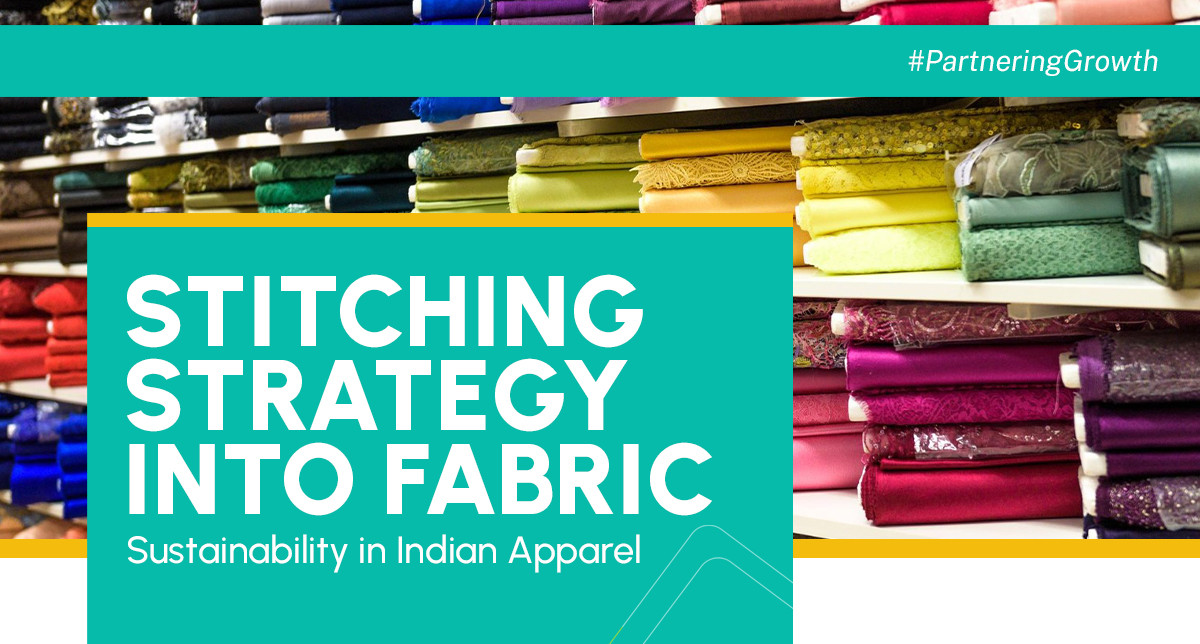


The Indian apparel market had an estimated revenue of over US$105 billion in 2024, with projections suggesting a steady annual growth rate of around 3.35% from 2024 to 2029. (Source: deepwear.info —"Growth" and Sustainability in India's Apparel Industry: Key Trends & Future Projections") Sustainability has now become integral to the global textile and apparel sector. In India, which plays a major role in the global textile & apparel supply chain, companies are starting to understand the importance of integrating sustainable practices into all areas of their operations. This change is driven by a mix of factors, including rising consumer awareness, stricter international regulations, and the essential need to save resources and reduce environmental damage. Indian apparel manufacturers are taking a multi-faceted approach to weave sustainability into their operations. They are focusing more on eco-friendly raw materials. There is a growing trend to use organic cotton, recycled polyester, and innovative natural fibers like hemp and bamboo, which require less water and fewer pesticides. Companies are also sourcing materials from certified sustainable forests for cellulosic fibers to ensure responsible forestry practices. The India organic cotton market size reached USD 51.0 million in 2024 and is projected to reach USD 955.9 million by 2033, showing a Compound Annual Growth Rate (CAGR) of 38.50%. (Source: IMARC "Group—"Organic Cotton Market in India Size & Industry Share 2033"). As of March 31, 2023, India had 10.17 million hectares under organic certification, highlighting the potential for sustainable sourcing. (Source: IMARC "Group—"Organic Cotton Market in India Size & Industry Share 2033") In addition to materials, companies are investing in modern technologies to reduce water use, a significant issue for an industry that consumes a lot of water. Producing a single cotton T-shirt, for example, needs approximately 2,700 litres of water, and the textile sector contributes 20% of global industrial wastewater pollution. (Source: Colorful Socks - "Water Consumption in Textile Industry Statistics 2025") Techniques like zero liquid discharge (ZLD) systems for dyeing & finishing, alongside water recycling plants, are becoming more common. Companies are also measuring energy efficiency. This includes using energy-efficient machinery and incorporating renewable energy sources. Moreover, innovations in sustainable dyeing and finishing processes are gaining traction. Techniques that use less water, non-toxic dyes, and biodegradable chemicals are under exploration and implementation. The shift towards digital printing, which reduces water and chemical use, is another significant step, directly addressing the industry’s large water footprint. However, the sector still faces serious challenges. The MSMEs, which are called the ‘backbone of the industry’ and account for an estimated 3-4% of India's total carbon emissions, struggle to access capital for upgrading to sustainable technology and managing complex international compliance requirements. While the sector employs approximately 45 million people, with 60-70% being women, reports indicate that more than one in five workers have faced violence & harassment at work, and many earn less than the legal minimum wage. Only 5% of Indian textile workers belong to a trade union, highlighting areas for ongoing improvement in fair labour practices. (Source: "FEMNET—"Factsheet: India's Clothing Industry") Despite these hurdles, strong government support, industry collaborations (such as the MSME Sustainable (ZED) Certification program), and rising consumer demand are creating a positive environment for the sector. The growing focus on eco-friendly materials, resource-efficient manufacturing, fair labour practices, and innovation is helping Indian businesses gain a competitive edge in the global market. They are positioning themselves for a resilient and responsible future.